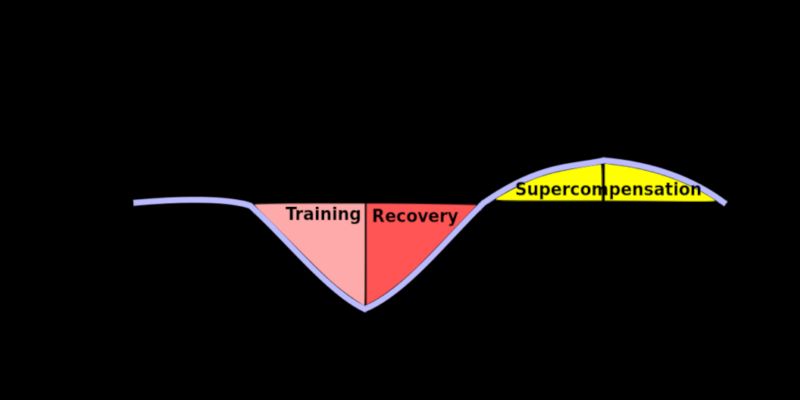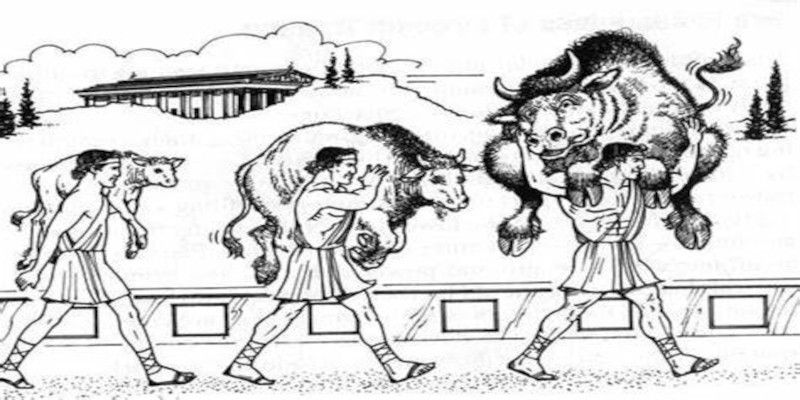Table of Contents
ToggleWhile it’s true that a large part of your physique is biologically determined by your genes, it doesn’t mean that there is nothing you can do to become a fair bit stronger. Will you be able to get as powerful as someone who is naturally gifted and inclined to become strong? Probably not.
That is if the naturally gifted person also works hard in the gym. But you would be amazed at what results you could achieve if you put in the effort AND train smart. Even though you might not be the most genetically gifted person in the world.
That’s why I compiled my 10 best tips for building muscle strength to help you on your fitness journey.
My best personal tips to gain strength

Follow a proven workout program
Follow a routine that has been historically proven to produce good results like Starting strength, Stronglifts, Sheiko, or 5/3/1 programs to produce an adequate stressor that’s necessary to become stronger.
Afterward, let your body recover to super compensate to grow a little stronger than it was before.
Don’t go around trying to create your workout routine when you are still a novice without any knowledge of how to structure your training. Chances are large that you don’t have the necessary knowledge and training experience to create a well-thought-out, balanced, and effective workout program.
I made the mistake early on in my lifting “career” of trying to create my workout regimes too soon before I developed the necessary understanding of how to do so, and it cost me both gains and injuries. You need multiple years of training and lifting knowledge before you can even begin to create your efficacious programming.
Progressive overload

One of the best workout tips to gain strength is making use of the progressive overload principle.
Progressive overload means that you are looking to gradually increase the intensity and/or difficulty of challenging the body. You can do so by lifting heavier weights, by performing more reps/sets, and by making the exercises harder.
These are all possible ways to utilize progressive overload in your workout program, and it’s one of the driving factors to increase strength and muscle mass.
It doesn’t matter if it’s linear periodization or non-linear periodization. As long as you keep increasing the amount of weight, sets, reps, or difficulty of the exercises.
Beginners are best off following a workout program with linear progression for the simple reason that they can gain strength and muscle size quicker than advanced trainees who need periodization to progress.
That’s because novices are relatively untrained, and the weights they lift aren’t that heavy, so they recover more quickly than an advanced trainee would. This means that athletes who are just starting can recover fully between workouts, meaning they can lift heavy each weightlifting session.
If you are an intermediate or advanced lifter, then you’ll need to add in non-linear periodization when linear periodization is no longer possible. That’s because the loads that are being lifted become too heavy for your body to adequately recover from in between your workouts.
So to summarize: You’ll need to drive progress by adding more weight, reps, or sets to your workouts or your body will adapt to the stressor and as a result, progression will come to a halt.
Lift heavy weights

Image of a man performing a back squat with a barbell. Lifting heavy weights is one of the most important factors to drive strength gains. If you think about it, what does being strong mean to the general population? Being able to lift something heavy. And if something is heavy, don’t you rather lift it as explosively, and for as few reps as possible to make it easier?
That’s exactly what you need to do to get stronger. Lift heavy weights as explosively as you can. But of course, make sure to remain in control of the weight. Lift for a low amount of reps. Between 1–5 reps is mostly the ideal rep range to increase strength.
Lift explosively
Lift explosively. The faster you move the weights, the more weight you can move because you have the added advantage of using the acceleration you’ve created.
Force = mass x acceleration. So if we increase our lifting speed, then so will the weight we’re able to lift. Plyometrics is a great way to become more explosive in the movements you’re trying to improve.
Perform compound exercises

Compound exercises are movements that use multiple muscle groups at the same time. A squat for example works out the legs, but also the core to stabilize the weights that are resting on your back.
Bench pressing is another example of a compound exercise because it works out the pectoral muscles, but also the entire core and front deltoid of the shoulder.
Lift with the correct technique
Lifting with bad technique or bad posture can, and will eventually lead to injuries. That’s why I advise everyone to start lifting with lighter weights than they’re capable of to learn the correct technique first before packing on the weights.
Slow and steady wins the race regarding becoming bigger and stronger. When you are injured, you will inevitably need to take time off from lifting. In the worst case, you might even need surgery to recover.
Long story short, exercise with the right technique and don’t lift heavier weights than you can handle.
Diet tips to gain strength
Eat more calories than you burn

You can’t build a house without stones. Similarly, your body can’t recover properly, or supercompensate by getting stronger, when you aren’t eating enough calories. Eating at a slight calorie surplus allows you to become stronger much quicker than you would if you were training in a calorie deficit. Your calories are your building blocks to gain strength.
That means that you want to be eating a slight calorie surplus, so your body can use these reserves to recover faster and to create extra muscle mass. That’s because the amount of muscle we have affects our strength gains as well. All the more reason why you should learn how to bulk up effectively.
Be careful though, if you eat a large calorie surplus then not all of these abundant calories will go into building strength and muscle mass. Your body will rather store these excessive calories in the way of fat to use it as an energy supply in the future when needed.
That’s because food sources have historically been scarce, and that is why we didn’t have as much access to food as we have today. As a result, our bodies are made to conserve energy and to make full use of the calories that we ingest.
So eat a slight calorie surplus, not a large one, if you don’t want to get fat in the process of building strength and/or muscle.
Eat enough protein

Make sure your protein intake out of all those calories you ingest is large enough because proteins are the most important building blocks for muscles.
The previous house and stones example applies to protein as well. Consume enough proteins to fuel your muscles to grow.
Fun fact: Consuming enough protein also lets you lose body fat more quickly because it reduces your appetite, makes you eat fewer calories, and boosts your metabolism. So it’s a win-win situation.
Recovery tips to gain strength
Get enough sleep

Our body recovers and produces the largest amount of testosterone and growth hormone while we sleep. Consequently, being sleep-deprived lowers our testosterone levels drastically, thus; effectively hindering our strength and muscle growth.
You should aim for at least 8 hours of sleep, with most of those hours being deep, continuous sleep.
Get enough rest

This might seem similar to the sleeping advice, but it’s meant in a more overarching way. While sleeping enough will help with recovery, resting is part of the bigger picture.
Resting also means taking days off from the gym when needed, eating healthy food, regularly deloading when training with heavy loads to prevent injuries, and so on.
Frequently Asked Questions (FAQ)
How to use super-compensation to increase body strength

Increasing body strength and getting bigger relies on a simple basic mechanism which is called supercompensation. It is an adaptive response of our body to adapt to an acute stressor.
You put your body through a stressor, which in the case of building strength is lifting heavy weights or another form of resistance training. Contrary to popular belief, you are weaker than you were before you started the weightlifting workout right after the weightlifting session.
You might look bigger because of the blood that’s getting pumped into the muscles to aid recovery, but you’re weaker than you were before you worked out.
You begin your recovery right after your weightlifting workout until you are at the same strength level you were before you started your training session.
However, your body is an effective machine, and it will continue to adapt to the stressor (the weights) until you are a tiny bit stronger than you were before exercising. This part where you get stronger than you were before is called super-compensation. Also called the gains.
Final thoughts

In my opinion, these 10 tips cover the most important basics for building muscle strength as efficiently as possible. That doesn’t mean that there aren’t other hints out there that can also help you to increase body strength at a faster rate.
However, I can confidently say that if you train well, lift heavy, and ingest enough calories and proteins all the while sleeping well, you will start becoming stronger while building muscle mass. But becoming stronger and gaining muscle mass is a long and tedious process that requires patience to succeed.








1 thought on “10 Best tips for building muscle strength”
Comments are closed.